Bric-a-Brac 56
Our wine country edition! Demystifying Burgundy, Abruzzo via a local, an emerging California wine region with a cool new place to stay, and Napa favorites from the founder of Vintner's Daughter
Suntans, “what did you do this summer?” chatter, and back-to-school groans have worn off as most of us are in full fall swing. In the wine world, it’s harvest season—the busiest and most exciting time of year—so we thought it would be cool to theme this edition around wine. On a personal note, we spent a lot more time this summer getting to know our neighbors in the Médoc. While our area is famous for its grand cru chateaus (think Palmer, Lafitte, Latour, Margaux, Lynch Bages), many of the smaller estates are overlooked. Even though we’ve been coming here for eight years, we had not taken a deeper look at the cru bourgeois around us—until now. And what we’ve discovered has been incredible: family-owned estates that are thrilled to have visitors and serious wines for incredible value. I’ll be writing more about them as I discover them, but some new finds are Château Lagorce, Château les Ormes Sorbet Château Livran, and our dear friends at Larrivaux. We may still be finishing off the last of the rosé, but we’re excited to have started collecting some reds for the cooler weather cooking*.
If all the harvest talk in this post has you wanting to do a fall trip to wine country, check our Spain, Portugal and France Travel Planners, our Napa Valley Black Book, and our friend Joe Campanale’s book Vino, which has great Italy wine intel.
(*Shameless plug–my husband Matt’s cookbook, A Man and His Kitchen, comes out next week on Sept 26! Book tour dates are being finalized for west, east, and south—and I’ll list them at the very bottom of this post.)
DISPATCH FROM…Harvest in Burgundy
I’ve often heard friends in the wine industry grumble about how everyone thinks their life is some paradisal existence mostly entailing drinking wine. Friends and family imagine a storybook lifestyle in which they walk the vineyards picking grapes and enjoying long daily lunches with wine. My family certainly commented on the Disneyland-like look of Beaune’s cobblestone streets, charming architecture and historic churches when they first visited. For those of us who changed careers or are expats re-rooted into the French countryside (I’m a Californian transplant in Burgundy myself), we get this a lot.
Of course the grumbling comes in because it’s not Disneyland. Winemakers are some of the hardest workers I know. Growing grapes and turning them into the coveted wine that fills the bottles of Burgundy represents long days, back-breaking pruning of the vines in the coldest months of the year, and a very real vulnerability to weather and climate. So much is done by hand here, from harvesting to vinification, bottling to waxing, labeling, and shipping: these are fastidious tasks which really demand a labor of love.
Interspersed between each of the above mentioned trials however, there is magic. It’s not the “Happiest Place on Earth” kind, and that's precisely what is so magnetic about it.
The harvest period is the epitome of this somewhat paradoxical lifestyle. Pressure is at its peak, mornings are early and nights are late. Physically, mentally and emotionally, we are all exhausted by the end of it. And yet, it is a moment of celebration, release and joy. Watching the teams of harvesters with buckets on their backs moving up and down the rows at daybreak is a beautiful thing, and we manage to see it through the fatigue. Around me today, cars are honking as they drive through the villages decorated with vines and flowers, harvesters hang out of the back of trucks singing and shouting, spraying water and throwing grapes. It is a moment hors-temps, folkloric, and full of hope.
There is a community of (perhaps oxymoronic?) workaholics and bon vivants installed in this place because of this powerful allure. They make wine, coffee, beer, and cider; they run beautiful bed & breakfasts, cozy wine bars, and cook soulful food worth traveling for. This community makes Burgundy all the more special and is behind the following establishments.
Le Soleil - Lola Taboury Bize opened Le Soleil in Savigny-lès-Beaune next to the family winery Domaine Simon Bize, on a beautiful avenue of linden trees a few years ago. It quickly became a favorite restaurant and convivial gathering place. Laila Aouba prepares bright and creative dishes in a tapas and family-style format (a refreshing change from the traditional French formule). The wine list leans natural and rounds up the exciting new names alongside the institutions from Burgundy and beyond.
Domaine de Cassiopée - Talloulah Dubourg and Hugo Mathurin started their domaine in Sampigny-lès-Maranges in 2020. Their 5 hectares of vines mostly comprises Hautes Côtes de Beaune, Maranges and Bourgogne appellations. The young couple is working hard to convert the vineyards into organic farming and adhere to a philosophy of low intervention winemaking, low to no sulfur, and are simply lovely, genuine people.
VIF - They say it takes a lot of beer to make a good wine and Burgundian winemakers have found a favorite in VIF. Tommy Pace and Lara Young started their microbrewery in 2020 and are based in Ladoix. Tommy has a winemaking background and both share a passion for artisanal beverages, taking inspiration from German, American and Belgian beer cultures.
L’Arche des Vins - A newer addition to the landscape of wine bars in Beaune, this is the sort of locale you go to for an after-work glass and end up closing down the bar. The establishment is owned by childhood friends Félix Arnulf and Romain Paxion who grew up in Burgundy and whose friendships (and allocations) in the community run deep.
Domaine Camille Thiriet - Matt Chittick and Camille Thiriet started their domaine in Comblanchien in the Côte de Nuits in 2016. They champion the Côte de Nuits appellation and while they’ve recently purchased a new domaine in Corgoloin, they aim to keep their production small to give as much attention as possible to every bottle. To me, the wines are in the sweet spot of being both easy to drink and serious Burgundy.
La Maison de Pommard - Right on the central square of the renowned winemaking village of Pommard is the home of the de Montille family, painstakingly renovated with architect Emanuele Salini and converted into an elegant bed and breakfast by Isabelle de Montille. The design is minimal, thoughtful and refined. Access to Isabelle’s well-allocated cellar is a serious perk.
Château Chandon de Briailles - For a cultural stop (after a great lunch at Le Soleil and hike through the vineyards), visit the manoir and gardens of Domaine Chandon de Briailles in Savigny-les-Beaune. A folly of the 18th century, the chateau and its gardens were built at a time when the architect, Jules Hardouin-Mansart, and the landscape architect, André Le Nôtre, were completing the Château de Versailles and its gardens. The gardens are planted with ancient trees, beautiful flower beds, and adorned with sculptures. If you have an opportunity to taste them, the biodynamic wines of the François de Nicolay’s domaine are fantastic as well. I am producing a temporary art exhibition here this Autumn (October 20 - November 25).
Saint Romain Coffee Roastery - Matt McClune is a painter installed in the beautiful hilltop village of Saint Romain. He started his boutique roastery during the pandemic. He has approached coffee-making from the angle of terroir: the idea of tasting place. Much like with wine, he is deeply interested in the environment from where his beans come from and follows the process with laser precision every step of the way.
La Dilettante - Run by Laurent Brelin (lovingly called Lolo), La Dilettante is the kind of classic wine bar that feels as if it's been there forever. The coziest spot in Beaune (along with Caves Madeleine, Lolo’s previous restaurant), it is the perfect place to geek out over a delicious bottle along with a board of cheese and charcuterie.
L’Epicerie Paysanne - A modern-meets-traditional epicerie run by Bertrand Bazin in the center of Beaune. The go-to spot for locavore products - fruit and vegetables, locally-roasted coffee, honey, jam and more.
Milena Berman moved to Burgundy expecting to stay a couple of years. More than ten years later, she’s started a family, (helped) start a small winery, and co-founded a business, Hautes Côtes, creating wine and cultural experiences for curious visitors of Burgundy and France.
TRAVEL WELL Q&A
April Gargiulo, Founder, Vintner’s Daughter
Tell us a bit about you and your company.
I don’t come from the world of beauty; I come from the world of fine winemaking in Napa Valley, California. My family still makes single-vineyard, estate wines there today at Gargiulo Vineyards in Oakville. I consider myself incredibly lucky to have spent so much time in a community that places such a high value on craftsmanship and quality.
I am also someone who, like many, deals with cystic acne, pigmentation and all the fun things that come along with getting older. Pre-Vintner’s Daughter, I was in a constant search for the newest and next product promising flawless skin. They were more often than not very expensive “luxury” products with celebrity endorsements and slick packaging. One day I started looking at their ingredients. I was shocked to realize that they were .01% active ingredients, the rest was low quality filler that was also in many cases harmful. None of that sat right with me. I come from Napa Valley, a community dedicated to making the finest wines in the world through meticulous attention to detail and craftsmanship. Shortcuts are not allowed and practically every grain of dirt is considered for its quality.
This was the genesis of Vintner’s Daughter. I wanted to build a true luxury, performance-driven skincare company that made products from the finest ingredients in the world, using time-honored techniques in order to bring about profound and lasting balance and health in the skin. It sounds lofty, but I wanted to build a skincare company on the same philosophical foundations as the winemaking world I had come from.
You’re based between San Francisco and Napa. What are a few of your favorite healthy/locavore spots to eat?
I love San Francisco dining—(Nari, The Progress, Cotogna, Mister Jiu’s, A16 to name just a few of our favorites)—but I love wine country even more, so my family and I race up as soon as school is over every Friday. My favorites are The Valley on the Sonoma Square. It’s casual with the most incredible farm-to-table food; not too precious, but incredibly precise and committed to the freshest and most beautiful food. I have a friend who says that you can tell how good a restaurant is by some basic elements including salt and butter. They have the best salt and butter. My family’s other go-to is Gott’s Roadside in St Helena, which scratches every itch you have for a nostalgic roadside burger joint. It’s hard for me to drive past without getting a soft serve, and some days I drive past it twice. For the vegetable-forward folks (like me), they have everything you want, too. There’s a location in the Oxbow Market as well, which is a food hall in downtown Napa with great oysters, coffee, gluten-free Mexican, baked goods and even a small but mighty produce market. It's right on the Napa River, so it’s also a great spot to relax.
What are a few experiences in Napa that help you to feel revitalized and connected to the surroundings and community?
I love a walk up and down St Helena’s two block main street. You will see everything from artisanal breadmaker Model Bakery (best English muffins ever) to local chocolatier Woodhouse, to interior design wunderkind Erin Martin’s shop to local potter Richard Carter’s gorgeous showroom, Carter and Co and Dion’s. High Street fashion like Elyse Walker and hometown hero Veronica Beard are also opening up on Main Street. Not to miss—there is a small, old-fashioned movie theater, The Cameo, that is so sweet to see films in. They even have love seats in the back.
Hiking is also something I love to do and one of my favorites, Mount St Helena, is just outside Calistoga. It’s somewhat unmarked, so you have to follow the force a bit. Look for the trailhead just off of Highway 29 north of Calistoga in Robert Louis Stevenson Park. Follow it to the top and you will be rewarded with views of Napa, Sonoma and Lake County. Calistoga is also the place where people have been “taking the waters” for 100 years and there are famous hot springs where you can soak the hike away. I really like Indian Springs and their mud baths. It’s a bit of a throwback, nostalgic experience in the absolute best way.
If you have kids, you have to go to Train Town in Sonoma. It’s a sweet, local amusement park that you can dip into and out of in about 45 minutes. Super low effort with big returns. It’s also down the street from The Valley restaurant.
How do you approach staying healthy and relaxed when you travel by plane?
I try to avoid processed foods when I travel as much as possible and drink a lot of water. I also just keep a feeling of gratitude and flexibility about it all because so much of it is out of our hands.
Do you do anything special for your skin?
The best thing I do for my skin is stay disciplined to a very simple and effective routine. Of course, it is all Vintner’s Daughter and in these three steps I know my skin is receiving everything it needs to be its absolute best. Active Renewal Cleanser, Active Treatment Essence and Active Botanical Serum are my holy trinity and all I travel with.
Do you take any particular supplements prior to traveling or during to stay healthy?
I am not great about taking supplements and for the most part rely on a healthy whole food diet. I would like to think that is enough.
Any strategies for dealing with jet lag?
We always try to jump in water as soon as we get somewhere, whether it is Lake Zurich, a hotel pool in Tokyo or the ocean in Kauai. Somehow it helps us set our body clock to local time.
Do you have any rituals you use while on a trip to reset and ground yourself in a new place?
I meditate daily no matter where I am, so that is always there to ground me. I also always pack loose leaf oolong tea from Song Tea in SF. This is a deeply connective morning ritual for me. The day isn't the same if I don't start here.
What are a few things you always pack in your Dopp kit?
Vintner’s Daughter, Kjaer Weis or Gucci Westman mascara, Goop lip oil.
Do you have a favorite hat for travel?
I am a hat person. I always have one on. The Commando by Lola Hats is my go-to for travel. It folds up easily and gets back into shape fast on the other side.
What are a few other favorite travel destinations?
Lake Como is my forever favorite and Villa d’Este is our spot. Il Gatto Nero in Cernobbio is a spot we always return to and this last trip we went to Il Sereno and Passalaqua for two beautiful lunches. We didn't get a chance to visit on this trip, but I've promised myself I'm going to see the gardens at Villa Carlota next time. I just took the train from downtown Como to Milan for the first time and that is a game-changer. Forty-five minutes and you are in one of the most dynamic European capitals. That kind of city-to-nature proximity is heaven to me. The Bay Area has that in spades as well.
San Francisco could really use our travel dollars these days. What are a few spots that you recommend visiting, that are unique to the city and worth traveling for?
Don't believe everything you read about San Francisco. It's still one of our most beautiful cities with incredible food, natural beauty, history and culture. It’s a great family holiday city and for that I recommend staying in The Presidio, a national park with two great small hotels, The Inn at The Presidio and Lodge at the Presidio. Don't rent a car. Uber, walk or bike everywhere. Go to Golden Gate Park, walk over the Golden Gate Bridge, visit the deYoung Museum and the Academy of Sciences. Hit up the Farmers Market Saturday morning at the Ferry Terminal. Take a hike in Muir Woods and walk the Lands End Trail. Eat at Marufuku Ramen in Japantown, Pizzeria Delfina and The Progress in the nearby Fillmore District. Go see the murals in the mission and stop for a bite at Good Good Culture’s beautiful rooftop. Bi-Rite Creamery is around the corner. Avoid the scoop shop line and head directly for the soft serve. Take a trolley ride, skip Fisherman's Wharf, and for the thrill-seekers grab a piece of cardboard and fly down the secret Seward Street stair slides.
Where are you dreaming of going next?
Indonesia and Southeast Asia in general are the first places that come to mind. I also want to go back to Madrid. My husband and I lived there in 2009 and haven’t been back since. I can’t wait to see all the changes.
MY ABRUZZO LIST
I grew up in Abruzzo, in the land of forte e gentile—of strong and kind people, villages and landscapes. On a map it’s on the other side of Rome, that delicate dance of coastline that hugs the Adriatic Sea. I love this region’s understated beauty and its deep contrasts – from the verdant green shades of our mountains and emerald-blue waters to the golden fields of wheat and silvery olive trees that define it.
For as long as I can remember, food has been an essential part of my life. And I’ve been fortunate enough to have the purest appreciation for what’s produced on this land—by getting to know local producers, the cooks, the makers and even the farmers. As a catalyst for exploration, I can’t help but seek to uncover my region's secret stories day after day. It’s an endless source of inspiration, heightening my curiosity and my love for Abruzzo—which only grows each time I return. A true passion and love, but also a sincere respect. I’m not only forced, but it’s ingrained in me to share and shine a light on this particular cucina with people from all over the world in my special retreats and food-focused get-togethers.
FAVORITE WINERIES
When writing about Abruzzo’s wines, one has to acknowledge the greatness of Emidio Pepe and Valentini. Both are true and proud representations of our region. If you say Trebbiano, only the word Valentini can follow it. Trebbiano has long been a grape variety widely accessible across Europe, often regarded as cheap. However, things changed drastically when Edoardo Valentini and his son Francesco got their hands on those grapes. Their wine couldn’t be more noble, earning the title of best white wine in the world and its makers the lords of the vines. Emidio Pepe Montepulciano d’Abruzzo is also one of the most emblematic expressions of our region—hearty and yet subtle and elegant. The founder is a true character and proudly Abruzzese. It’s no wonder that some of the best restaurants in the world keep multiple bottles of their wines in the cellar.
A few other makers deserving of mention…
De Fermo - With its vineyards facing the Majella and Gransasso mountains on one side and the Adriatic on the other, these wines are among the newest and most interesting expressions of our territory. The cantina dates to the 1800s and the old palazzo just above it is completely charming. Their concrete Montepulciano is a fruity red favorite, and they often have small batches of orange wine to try and to take home.
Cirelli Wines – Hidden in the outskirts of Atri, an area known for wine production, these makers decided to experiment with terracotta amphoras. Just a few years later they’ve developed a cult following, becoming the most addicting and fun wines to drink—funky, delicious and full of personality. They quickly ended up on the menus of some of the coolest restaurants around the world. Try their Cerasuolo rosato; it’s magical.
Cristiana Tiberio - Her Trebbiano—which flips the typical variety on its head, using a rare and native white grape from 70-year-old vines—is majestic, and the Montepulciano is mouthwatering. A small cantina with a scientific focus, it runs like a well-oiled machine and her wines sing of the countryside and all its bucolic views.
Montetino - From Celano, in the province of L’Aquila, this winery has also lately gained a lot of interest. These oenophiles craft mountain wines, and the vineyards’ altitude make them the highest producers in Abruzzo, at 850 meters above sea level. Biodynamic and full of character, each bottle has many stories to tell.
TO EAT, DRINK AND DO
Don Gennaro wine shop - The oldest enoteca or cava of the region is here in Pescara, stocking the most iconic and precious wines of our territory and the rest of Italy. A charming, family-owned place now run by the second generation, the cava is a must-visit spot for aperitivo. By day it’s a classic wine cellar, but from 6pm onwards you can choose whether to buy a bottle to share or opt for a bicchiere of whichever grape they’ve just hand-picked. There are no tables, chairs or food, so I recommend heading to dinner afterwards. The true and only star of the night is the wine. You’ll find gaggles of locals crowding the place until closing at 10 pm.
Ristorante La Bilancia - It’s situated in Loreto Aprutino, one of the loveliest villages in the Pescara province that’s rich with history, culture and traditional olive oil and wine production. Fans of Valentini wine will know this area well. La Bilancia is a family-run restaurant where menus change daily and warm brothy bowls of pastasciutta (similar to pasta e fagioli) are scraped clean by farmers, wine producers, hunters and barons in disguise. Try the pasta alla mugnaia—a thick pencil-shaped pasta rolled by hand and seasoned with garlic and sweet pepper sauce—which is their specialty and the truest and most authentic version of this famous Abruzzo dish. Wash it down with some cerasuolo Valentini (or locally just called vino sfuso, which translates to “loose wine”), which has a beautiful ruby-pink tint and costs only around €20.
The village of Scanno and its lake - The secret gem of our region—albeit previously revealed by Henri Cartier Bresson—Scanno is known for its charming, winding alleys surrounded by beautiful, peaked mountains in the heart of a National Park. You can still spot women wearing traditional dress—long black blouses delicately adorned with handmade lace, colorful aprons, typical flat headdresses, and some of the most intricate and gilded jewelry. Don’t miss Scanno’s churches, the goldsmith workshop of Di Rienzo, and the most delicious food shops filled with biscotti and local cheeses made by Gregorio Rotolo.
Pasticceria Luigi D’Amico - One of the few places in Pescara that’s been left practically untouched since the era of Gabriele D’Annunzio, a poet of the Decadent movement originally from Abruzzo. A scarlet-red telephone booth marks its entrance before opening into a tucked-away cocktail bar in the corner, which is covered in the most beautiful white tiles all hand-painted with flowers. Their specialty is parrozzo, or “rough bread,” a semolina and almond cake doused in dark chocolate. Soft and spongy yet not too sweet, it pairs perfectly with a thick espresso.
More must-visit tables to book...
Gli Ostinati - Trabocco Mucchiola – go for a modern twist on spaghetti alle vongole
Trattoria San Domenico - facing the Aragonese castle of Ortona, for pasta with tiny crabs
Rito Pane - a new home-style restaurant in Stiffe with the coolest vibe – go for their focaccias and creative spin on vegetables
Il Nonno Pescatore – for the simplest and most indulgent fisherman's lunch of hearty fish stew, fresh catch of the day and homemade pasta
Mastro and Nole – in Pescara, for reinterpreted Italian Cuisine
And if you’re there long enough…
Pitocchi – for fresh pasta all’uovo still made using old-school machines
Cremeria la Bresciana – for maritozzo (super-stuffed sweet cream buns)
La Chitarra Antica – for fiadone (cheese puffs)
D’Alessandro – for the best treats (biscuits, pastries)
Cicchelli – for charcuterie and rows and rows of cheese
Gelateria Cicco – for the best sorbet (try the mulberry or visciole – sour cherry) in Francavilla
Allegra Pomilio is an Abruzzo-born photographer, home cook, writer and host/producer of culinary gatherings and events including Mèlisses, a culinary and hospitality project just two steps from the Aegean sea on the island of Andros in Greece.
GUEST BOOK: The Inn at Mattei’s Tavern, Santa Ynez Valley, California
By Alex Postman
Best for… A weekend of Central Coast Cali wine tasting with some wellness mixed in
The story… The Inn at Mattei’s Tavern (pronounced “Matty”) is based around a stagecoach saloon and guesthouse built by rancher and Swiss immigrant Felix Mattei in 1886, just a dust cloud away from the then-new Pacific Railway tracks. Earlier this year, Auberge reopened it as a resort hotel after a historically respectful transformation of the main inn and a few original cottages, plus some new guest rooms that blend right in. It’s a short walk from the Old West-vibed town of Los Olivos in Santa Ynez Valley’s wine country (of Sideways fame), half an hour from Santa Barbara and two from L.A.—making it a great base to explore the unusual east-west situated valley whose cooling ocean breezes are perfect for growing pinot noir and chardonnay.
The look and feel… On arrival, it still conjures a 19th-century whistle stop. There’s the original inn/tavern building with its “Santa Barbara Stage Office” gold lettering, the reception is a low white shiplap longhouse with a rocking chair-lined portico, behind which looms a striking wooden water tower under a feathery palm. But the large rectangular pool, clean-lined clapboard barn and wildflower-dense gardens beyond feel completely fresh. There are lots of thoughtful period details throughout, from the 1892 hotel registration book of ink signatures on display at the tavern, to vintage oil paintings, handmade wicker furniture designed to look like those in old photographs, to the white linen blouses worn by staff (which are actually Dôen—I asked, and unfortunately they don’t sell them in the excellent gift shop).
The rooms… There are 52 guest rooms on top of 4 historic cottages and 6 other suites (some of them with porch swings), but the place feels surprisingly small and quiet. Our room, a standard type on the second floor of a two-story building, was decorated in a (now ubiquitous) modern-farmhouse style, with wooden plank flooring, shiplap walls, a fireplace, black and white palette, and a straw hat and a plaid blanket to borrow for, I guess, a picnic—or maybe to use on the large outdoor balcony, which was great to have since the weather on the mid-coast is nearly always perfect.
The wellness… There are yoga classes and sound bath sessions, a fully equipped gym and a temporary spa in one of the guest cottages. But by mid-’24 the Lavender Barn spa should be open, with treatments inspired by the wine region and local flowers—Auberge are spa experts, so expect it to be great. You can also borrow a bike to explore Los Olivos and the surroundings.
The food… The main restaurant, The Tavern, has an open-flame grill and menu that you might call ranch-inspired Cali coast, with some Asian flavors. We loved the crispy cauliflower with roasted garlic tahini and the Okinawan sweet potatoes—then a lamb shank and very flavorful sea scallops with corn miso (while also eyeballing a giant wagyu tomahawk at the next table, which at $75 felt too indulgent). The next morning, I had the most unusual breakfast bowl with herby green rice, Chinese sausage, sea beans and a crispy deep-fried egg. Everything is served in beautiful locally made ceramic dishes and tinted glassware (some of these are in the gift shop). And the huge wine-list is California focused, of course.
For such a small-ish property, there were a surprising number of other options. The bar in the tavern building has a cozy low wood-beamed ceiling, leather club chairs, an original bar, and signs with the names of rancher’s groups that once used it as a watering hole. (I didn’t hang out here, but it looks like the kind of place where you wouldn’t dare order a cosmo.) Next door is the Felix Feed coffee bar, which also resembles an old-school saloon (or bordello?) with red wallpaper, chandelier, and a Prohibition-era trap door in the floor. Then there’s an all-day spot by the pool that serves drinks and snacks. And finally, the Gin Tap Bar in the flower-filled courtyard, named for Mattei’s first chef who was Chinese—serving craft beer, cocktails, and Asian tapas, and which is bumping with locals from Thurs – Sun.
Be sure to… Book visits to local wineries (the Santa Ynez AVA has more female winemakers than anywhere else in the country), which the concierge can help with. Stop at that gift shop, which stocks local products and crafts (we picked up some Luretic olive oil that of course the town is named for) and some not so local (Cire Trudon candles, Zeus+Dione dresses). Also leave time to wander around Los Olivos, which has a charming general store, a few galleries and a tasting room.
Parting words… I was prepared for it to feel a little hokey, as historically themed hotels sometimes can, but I thought Mattei’s was lovely—super tasteful and thoughtfully done, extremely peaceful, and a place that I would definitely come back to and explore a few wineries, which I didn’t have time for this trip.
Date of stay… August 2023
PIEDMONT FALL ROAD TRIP
By Vic Grier
Piedmont is a region that stole my heart when I first visited six years ago. Usually when I visit I take the 90-minute flight from London to Turin, but this time I started my road trip in Milan. Heading south into rural Piedmont, known for its wines (Barolo and Barbera), the picturesque drive meanders south past rolling hillside vineyards. I soon found myself in the center of some of the best grape-growing terroir in the world. With the hubbub of harvest and the annual International Alba White Truffle Fair taking place, autumn is my favorite season to take a trip to this beautiful part of northern Italy.
Just an hour south of Milan, I took the chance to visit La Giustiniana winery, a beautiful producer that is one of the foremost makers of white wines from the Gavi region. Using mostly Cortese grapes, which create crisp and nutty wines, their vines grow in the shadow of a neoclassical style lemon-hued mansion. Typically Italian and dating to the 10th century, it comes complete with a pocket-sized chapel. The estate was preparing for a wedding the following day, but they were good enough to let me in anyway.
I continued my drive to hotel Nordelaia, just 30 minutes west, further into the Unesco-listed Montferrato wine region. With just 12 rooms, this 800-year-old farmhouse encourages guests to enjoy il dolce far niente ("the sweetness of doing nothing") with a focus firmly on flavor (and two infinity pools that overlook the vineyards). The premise for my visit was a collaboration between the hotel’s restaurant LORTO and one of my favorite chefs, London-based Ivan Tisdall-Downes from the nomadic Native restaurant. A pioneer of sustainable and locally foraged ingredients, the menu reflected this in the sea bass with fish bone dashi and pickled radish. In November, they’ll be hosting a collaboration with Jacob Kennedy of Bocca di Lupo fame, which is truffle-based and just might tempt me back again.
Revived, the next day I continued my journey towards an historic house with a winery, but first it was time for lunch. I found myself passing through Canelli, a small town famed for its subterranean cellars (locally known as “cathedrals”), where sparkling wine is aged. I stumbled across Ristorantino ‘n Ca’d Basan in one of the town’s squares. After a quick plate of vitello tonnato, a local dish of thinly sliced veal and a tuna sauce, and tajarin, a skinny local pasta made with 30 egg yolks and mountain butter, I popped into Contratto, a local wine producer, to taste a selection of their bottles.
I carried on towards the small hamlet of San Martino Alfieri, home to the resplendent Marchesi Alfieri, a Baroque castle that dates to 1696. The estate sits on the border between Langhe, Monferrato and the Roero hills and is home to the Alfieri family, who’ve been instrumental in creating Piedmont’s historical, cultural and wine making heritage. The estate offers a number of humble rooms in the surrounding buildings, which also allows access to their landscaped grounds, which have stunning views, a fascinating wine cellar and bags of personality.
The village has one main restaurant, but the gem is a vintage bar, called Concordia, well worth a visit for their interiors of original mid-century furniture, terrazzo flooring and dusty bottled backbar. Check out the Chiesa di S. Anna miniature pink chapel in the middle of the town, too.
Barolo and Barbaresco
The next day was entirely focused on wine, kicked off by a tasting of Marchesi Alfieri’s own bottles from their local vineyards, with head winemaker Mario Olivero. Unusually for this region, they produce a pinot noir which is light and supple, and utterly delicious.
Next up I headed to the town of Barbaresco, to meet with the legendary producer Gaja. I was greeted by family member Giovanni Gaja, whose father Angelo is credited with revolutionizing winemaking in the area. I had the chance to try a 1996 Sorì San Lorenzo label, which showcased exactly why this house is so highly sought after.
From there I headed over for a quick visit to the town of Barolo itself, to see the castle and the Borgogno winery. Borgogno have the reputation for being the rebels within the region, creating unusual labels and wines designed for long aging in bottle, at a reasonable price. I picked up a couple of their current vintages to try in a decade’s time.
Turin
With bottles clinking in the back of my car, I headed northwest to Turin, the first capital of Italy, and checked into Casa del Pingone, a hotel with just seven apartment-style rooms. The property itself is part Marrakech riad, part Condesa townhouse, yet outside the scene is unmistakably Italian. Views from room 33’s balcony are of the imposing bell tower of Duomo di Torino, which rings out for aperitivo hour in the autumnal afternoon warmth. I didn't need to be told twice, so I headed out on the short walk to Caffè Torino for a pre-dinner negroni.
As a city, Turin is a mixture of ochre-coloured residential roofs and magnificent church spires reaching to the sky. Broad avenues and narrow cobbled streets are home to a number of bustling bars and restaurants, and I sit down at one of my favorite spots, the Torino institution that is Tre Galline. Famed for its truffles in the late autumn and its Piedmontese cheese trolley year-round, it’s a historical hangout for those looking for authentic local food and drink.
On my final day, I took a short train ride 25 minutes east from Turin to Pessione, to Casa Martini, home of the famous vermouth brand. A fascinating few hours in their visitor center where their archives of incredible advertisements and old bottles are on display was finished off with a cocktail masterclass and more negronis… obviously. Having refined my mixology skills for aperitivo drinks and a bag full of local wine, it was time to head home. I couldn’t wait to get back to London, to serve up some masterful Manhattans, and brilliant Barolo wines for my friends.
Vic Grier is a food & travel writer (and avid photographer) based in Windsor & London.
And here are the current book tour dates for Matt’s A Man and His Kitchen. Follow @wmbrownproject for additional locations and times.
NYC, Oct 5
LA, Oct 17
Montecito, Oct 18
San Francisco/Marin, Oct 20
Napa Valley, Oct 21
Washington DC, Oct 25
Amelia Island, Oct 31
Atlanta, Nov 1
Other cities in December include Birmingham, Charleston, Houston, and some still TBD.


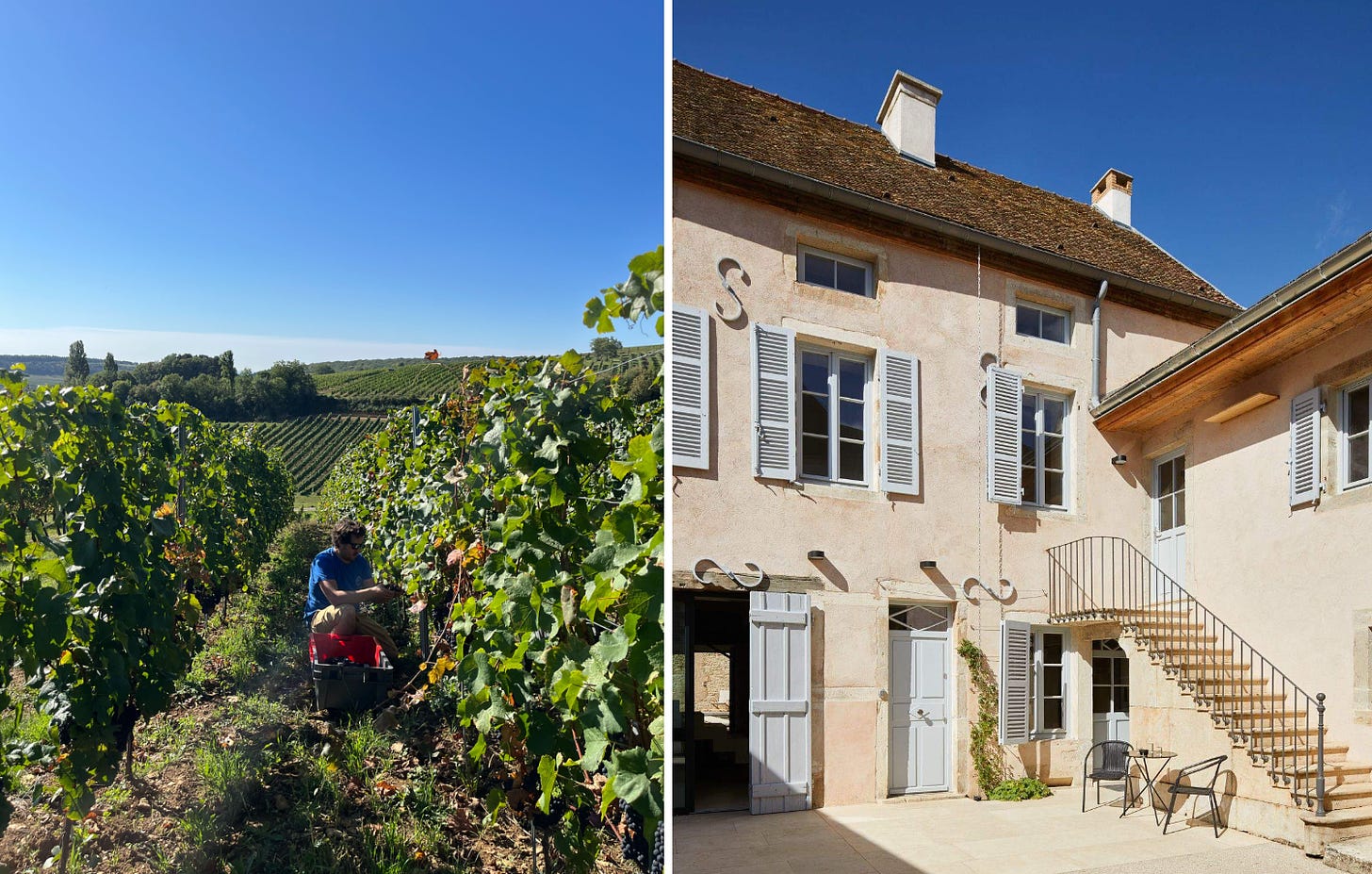
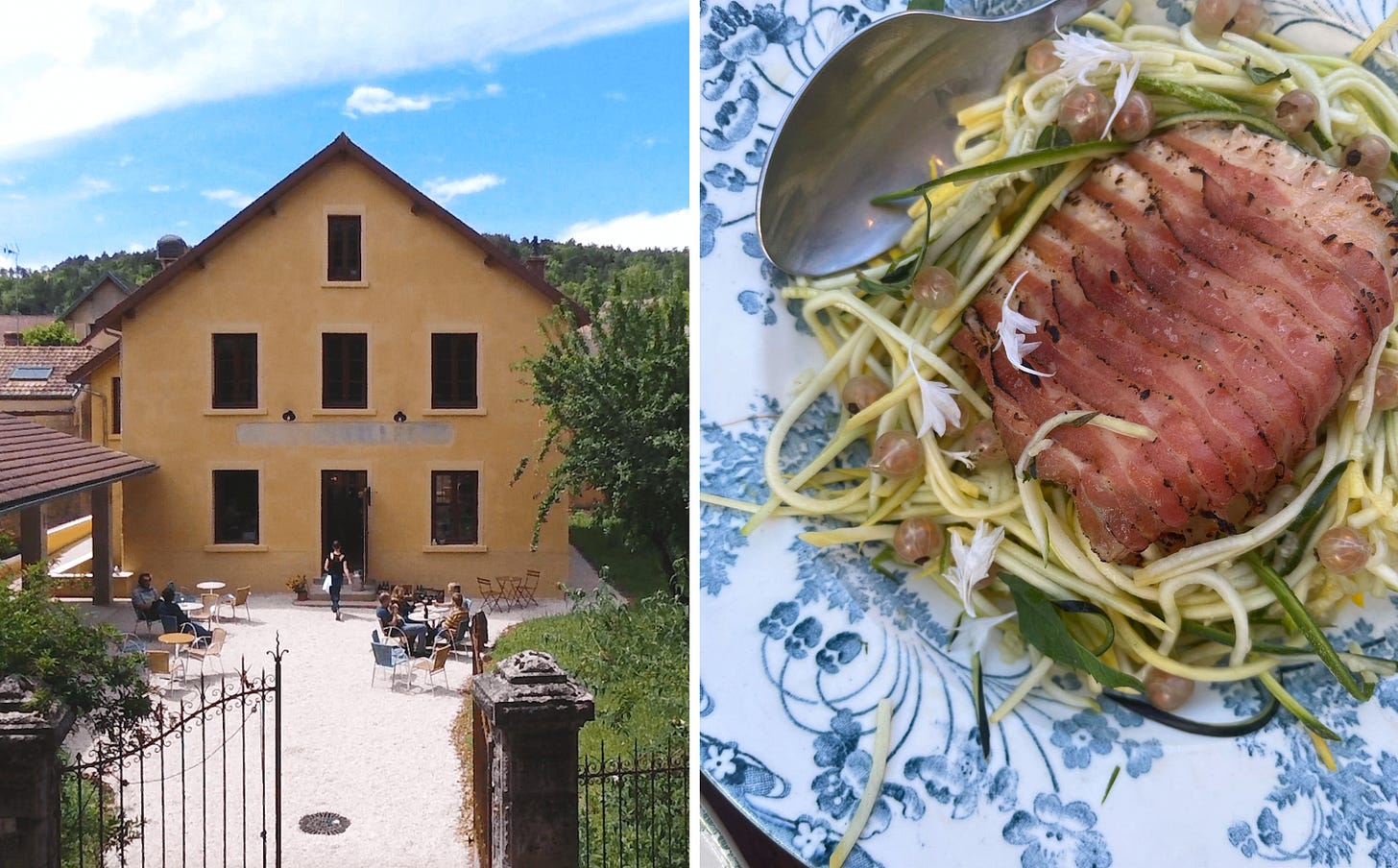
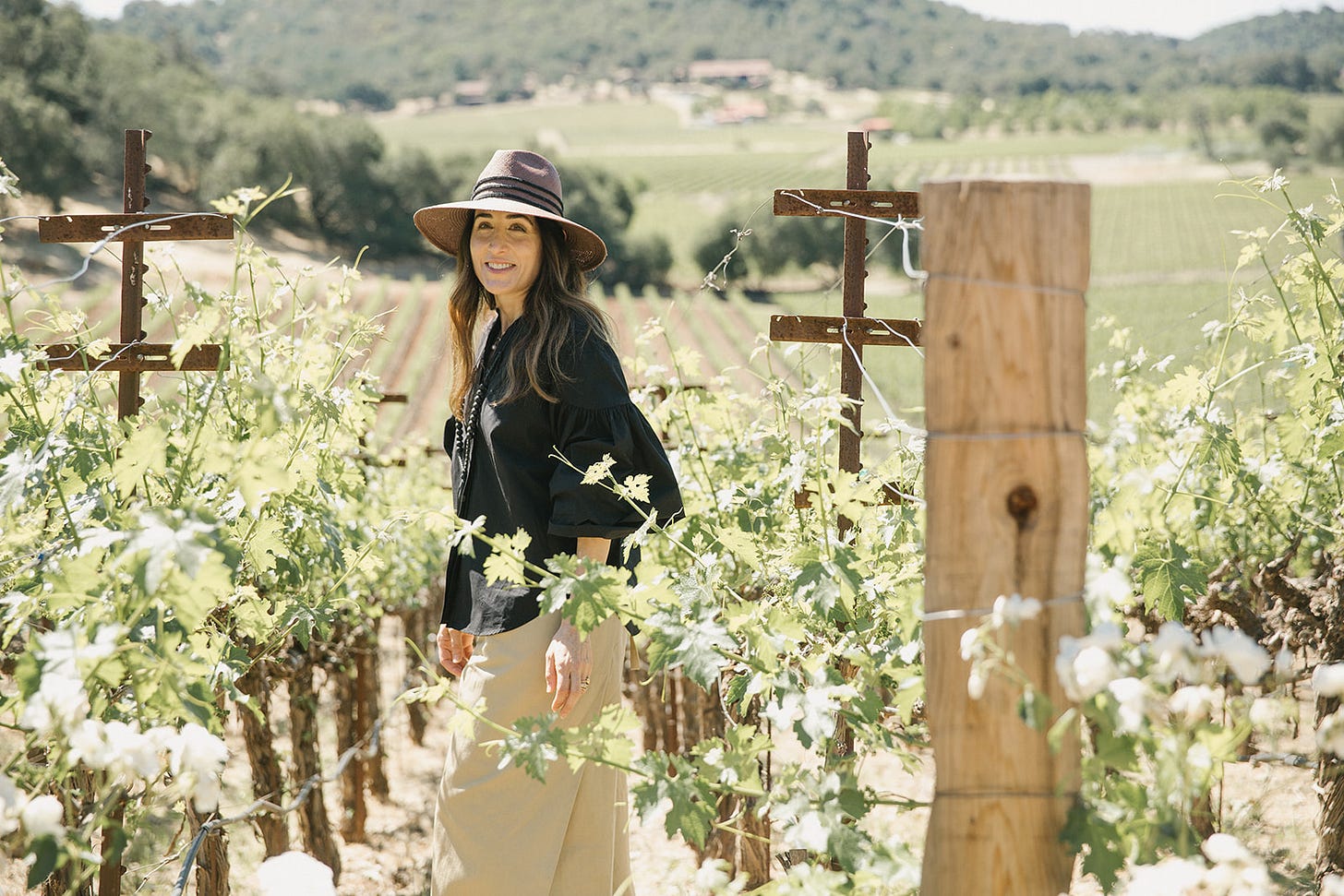
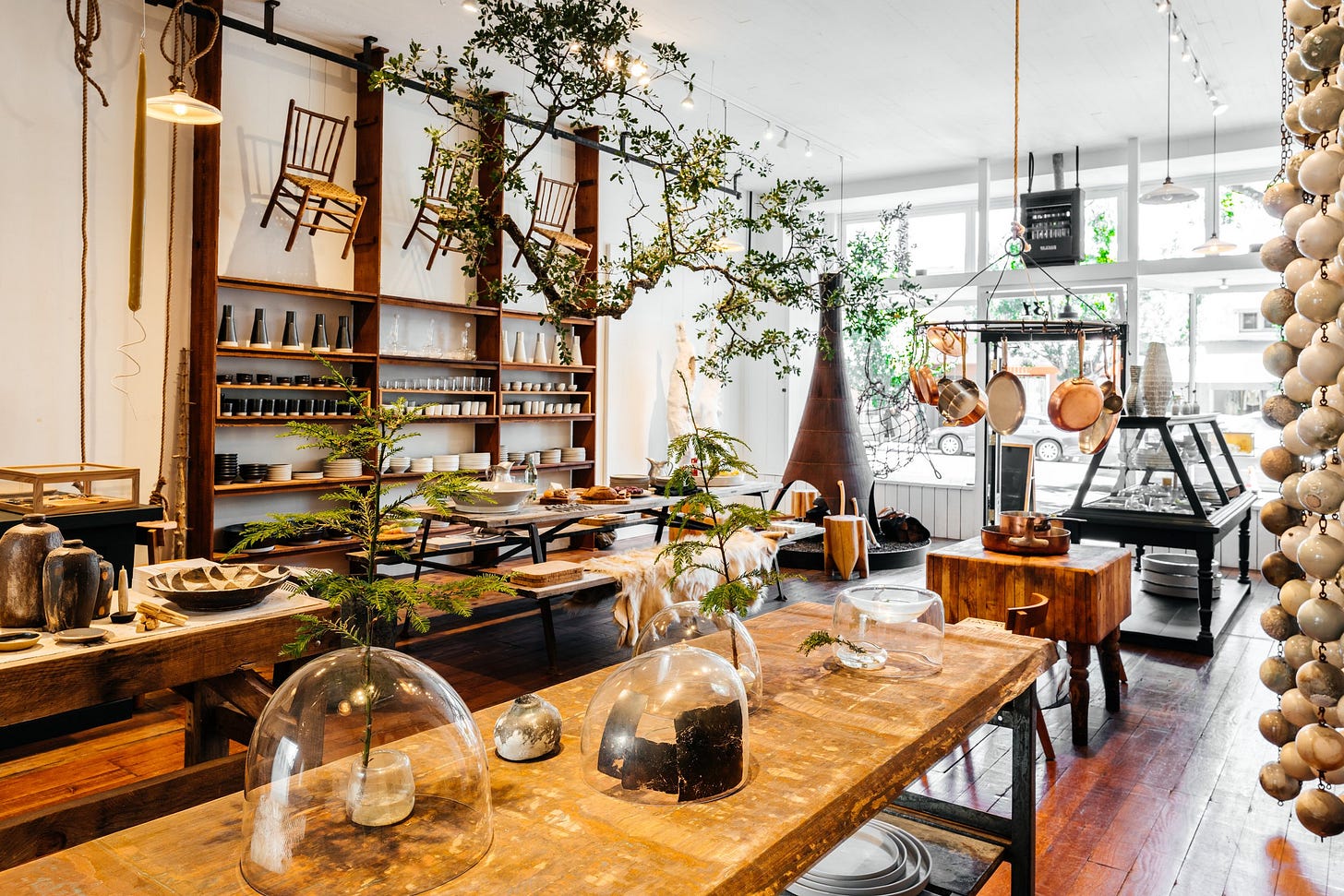
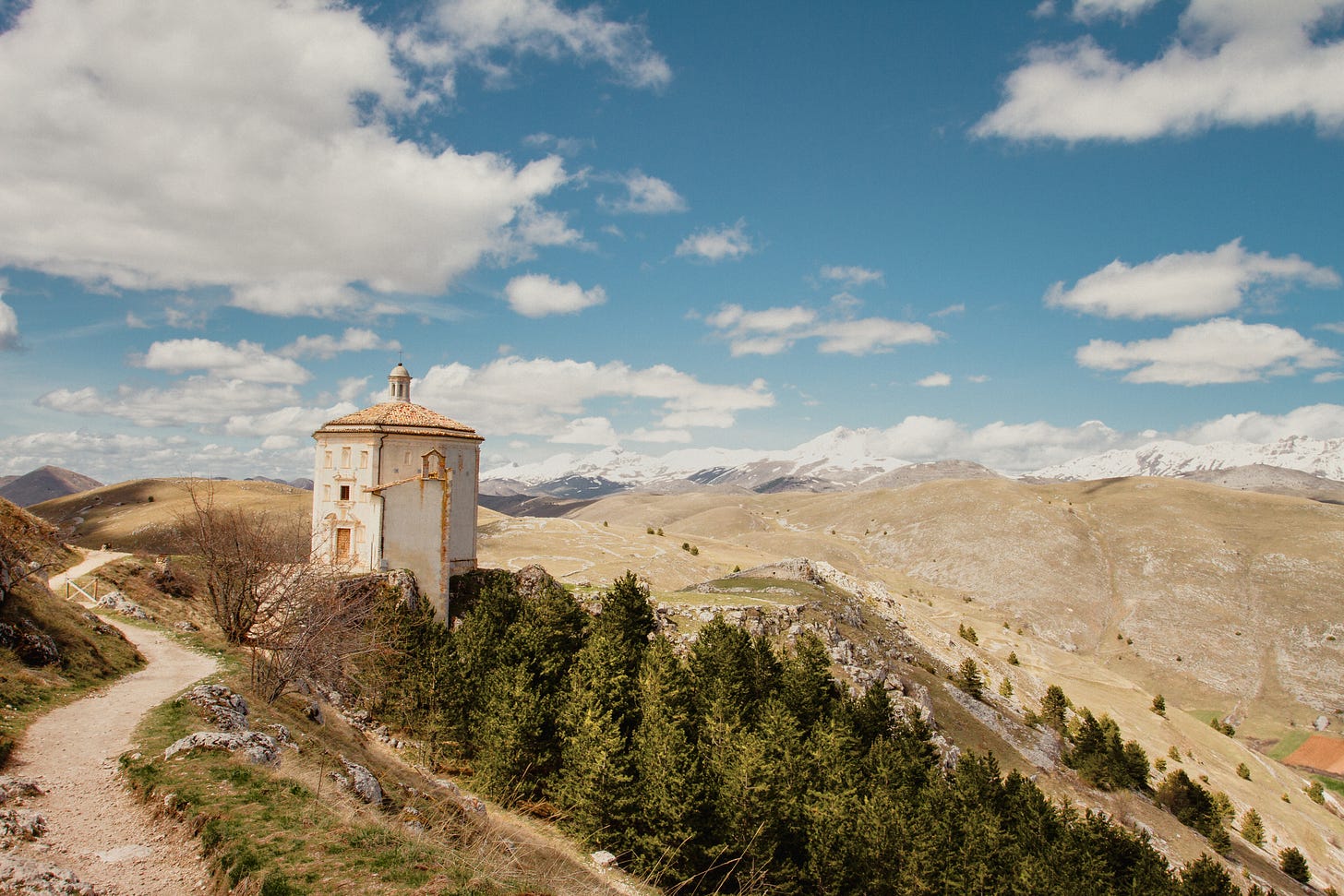
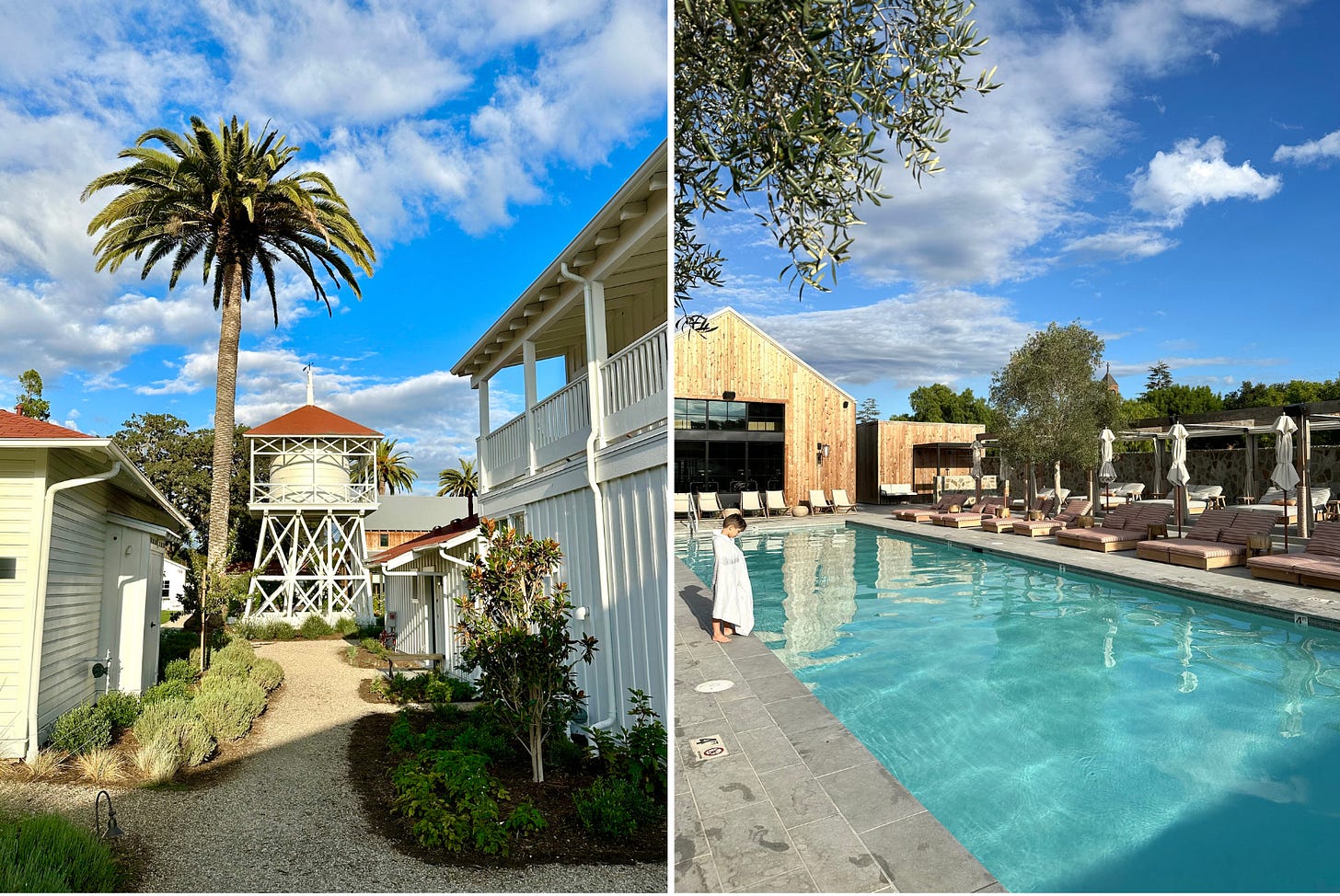

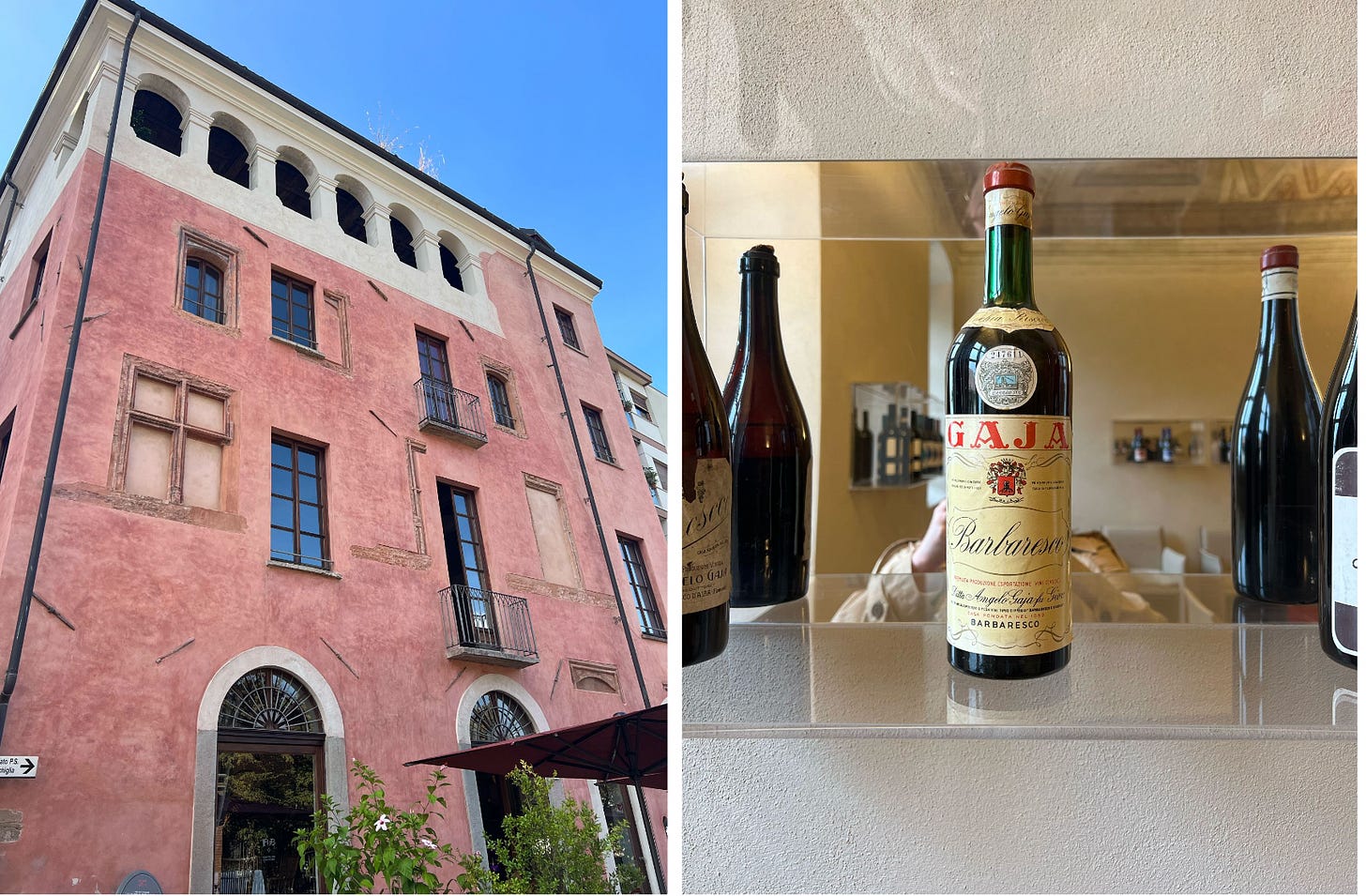
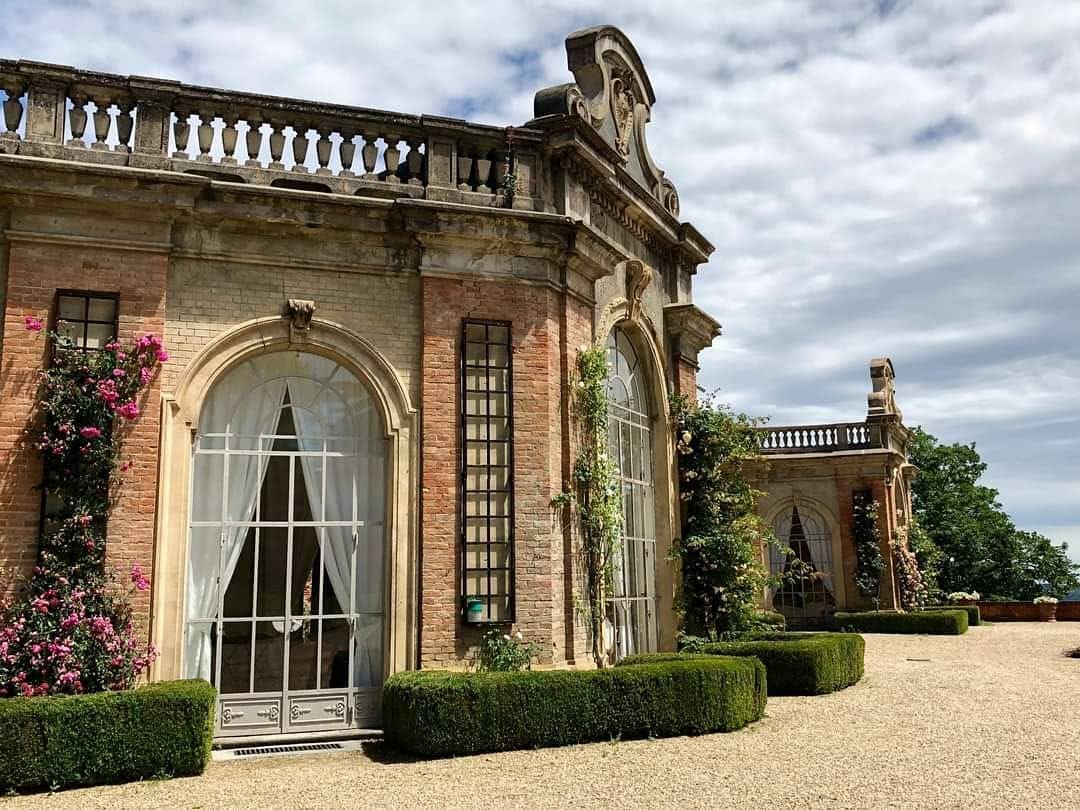
There are so many wonderful tasting rooms in Los Olivos…. Not just one.
Loving this wine edition, Yolanda! 🍷 Saving for our upcoming California trip. Of course, your lists are always save-worthy!
P.S. Any change you and Matt would add Ohio to the book tour?! I know a couple folks in Columbus who would go! 😉